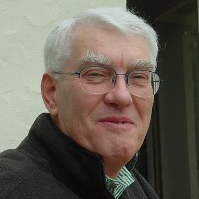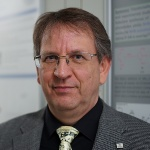10th Anniversary of Inorganics: Inorganic Solid State Chemistry
A special issue of Inorganics (ISSN 2304-6740). This special issue belongs to the section "Inorganic Solid-State Chemistry".
Deadline for manuscript submissions: closed (31 October 2023) | Viewed by 19410
Special Issue Editors
Interests: quantum chemistry; solid-state chemistry; solid-state physics; crystallography
Special Issues, Collections and Topics in MDPI journals
Interests: energy storage; solid-state ionics; lithium batteries; thin films
Special Issues, Collections and Topics in MDPI journals
Interests: solid state chemistry; materials chemistry; synthesis; crystal growth; structure-property relationships
Special Issues, Collections and Topics in MDPI journals
Interests: inorganic-organic interface; materials characterization; nanomaterials; polymers; nanoparticle synthesis; mechanochemistry; continuous production of compounds
Special Issues, Collections and Topics in MDPI journals
Interests: quantum and computational chemistry; inorganic and coordination chemistry; organometallic chemistry; organic chemistry; catalysis; non-covalent interactions; machine learning and artificial intelligence in chemistry
Special Issues, Collections and Topics in MDPI journals
Interests: solid state chemistry; materials chemistry; metal phosphonates; luminescence; antimicrobial materials; photonic materials; MOFs; functional oxides; zeolites
Interests: synthesis of new hierarchical wasteform materials for the effective immobilization of nuclear waste in persistent architectures; crystal growth of oxides, fluorides, chalcogenides; luminescing and scintillating materials
Special Issue Information
Dear Colleagues,
It is not at all surprising that solid state chemistry, a key pillar of inorganic chemistry, has grown enormously within the last decade, and there is significant progress not only in synthesis, structure, and properties of solid phase materials, in particular but not restricted to non-molecular solids. As solid state chemistry is inextricably linked to and strongly overlaps with solid-state physics, mineralogy, crystallography, ceramics, metallurgy, thermodynamics, materials science, and electronics, plenty of novel findings are happening at the contact line, with a strong emphasis on the synthesis of novel materials and their characterization. Not only has significant progress been made in melt methods, solution methods, and gas reactions, characterization of crystalline and amorphous solid-state materials has improved quite a lot. And let’s not forget that there is an increasing influence of theory, so theoretical chemistry targeting the solid state, computer modeling and artificial intelligence are currently supporting the busy solid state chemists in their daily work. Finally, there is a plethora of exciting applications in which solid-state compounds play a decisive role. This Special Issue dedicated to 10th Anniversary of Inorganics focuses on Inorganic Solid State Chemistry. Both experimental and theoretical studies, fundamental and applied research manuscripts (original research articles and comprehensive review papers ) are very much welcomed for consideration. We therefore invite all solid-state researchers worldwide to contribute their research to our Special Issue, dedicated to the 10th anniversary of Inorganics.
Prof. Dr. Richard Dronskowski
Prof. Dr. Christian Julien
Prof. Dr. Rainer Niewa
Prof. Dr. Guido Kickelbick
Dr. Alexander S. Novikov
Prof. Dr. Gary Hix
Prof. Dr. Hans-Conrad Zur Loye
Guest Editors
Manuscript Submission Information
Manuscripts should be submitted online at www.mdpi.com by registering and logging in to this website. Once you are registered, click here to go to the submission form. Manuscripts can be submitted until the deadline. All submissions that pass pre-check are peer-reviewed. Accepted papers will be published continuously in the journal (as soon as accepted) and will be listed together on the special issue website. Research articles, review articles as well as short communications are invited. For planned papers, a title and short abstract (about 100 words) can be sent to the Editorial Office for announcement on this website.
Submitted manuscripts should not have been published previously, nor be under consideration for publication elsewhere (except conference proceedings papers). All manuscripts are thoroughly refereed through a single-blind peer-review process. A guide for authors and other relevant information for submission of manuscripts is available on the Instructions for Authors page. Inorganics is an international peer-reviewed open access monthly journal published by MDPI.
Please visit the Instructions for Authors page before submitting a manuscript. The Article Processing Charge (APC) for publication in this open access journal is 2700 CHF (Swiss Francs). Submitted papers should be well formatted and use good English. Authors may use MDPI's English editing service prior to publication or during author revisions.
Keywords
- solid-state synthesis
- solid-state characterization
- solid-state properties
- solid-state theory
- solid-state applications











